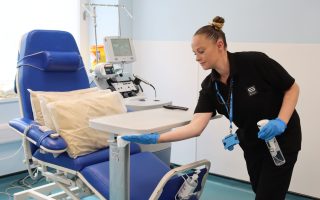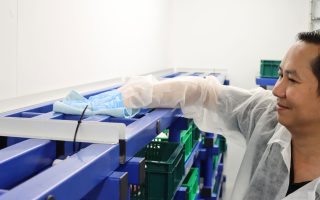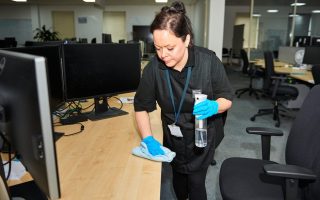It is extremely important when cleaning, that harmful bacteria and viruses are prevented from traveling around a building.
Bacteria and viruses can be transmitted throughout a building, by the same equipment and solutions being used in areas of different use. For example, using the same cloth and mops to clean a toilet or washroom and then using the same cloth or mops to then clean a kitchen or food preparation area. This can cause serious health hazards, due to the transmission of bacteria and viruses. In order to reduce this risk, we must use effective infection control procedures, by following cleaning colour coding systems.
Cleaning Colour Coding Systems are effective in contributing to the prevention of infection and cross contamination, ensuring a safe environment to all the users of a building, an essential requirement of Health and Safety legislation.
Why is cleaning colour coding so important?
- Minimises the risk of infection
- Reduces the spread of viruses
Colour Coding and Infection Control
“Helping to break the chain of infection.”

Chain of Infection
Successful Infection Control procedures rely heavily on us all having a sound understanding of the basics on the concepts of infection and how infections occur.
The chain of Infection shows the sequence of events to enable an infection to occur.
In simple terms, the chain starts with a source of bacteria, viruses or other harmful micro-organisms. Bacteria, viruses and other harmful micro-organisms that are capable of causing infections are known as pathogens.
The Pathogens (Bacteria and Viruses) live in Reservoirs and leave by a Portal of Exit, using a Mode of Transmission and find a Point of Entry to a Susceptible Host.
Where should I use colour coded cleaning?
Colour coded cleaning should be used in all key areas of your building, including toilets, shower rooms, kitchens, and food station areas, as well as more general use areas. For a colour coded cleaning system to be effective, a different piece of cleaning equipment needs to be assigned to each area.
What cleaning equipment should be colour coded?
The majority of cleaning equipment should be colour coded if you want to maintain the highest levels of hygiene possible in the workplace. This list is extensive but not exhaustive, featuring key items you should keep colour coded:
- Mops
- Mop buckets
- Brushes and dustpans
- Cleaning gloves
Benefits of colour coded cleaning practices
- Improve brand image and reputation
- Protect employees and visitors
- Minimise the risk of cross contamination
- Streamline cleaning process and make cleaning more consistent
- Identify low-risk and high-risk areas in your workplace
Colour coding for cleaning cloths
Generally speaking, colour coding for cleaning cloths will resemble the following:
- Blue for low risk zones
- Green for general food and bar use
- Red for sanitary fittings and washroom floors
- Yellow for wash basins and washroom surfaces
Colour coded mops will usually follow the same system. They will often feature a specific colour near the mop head, and may also have a cap at the top of the handle to indicate the usage.









